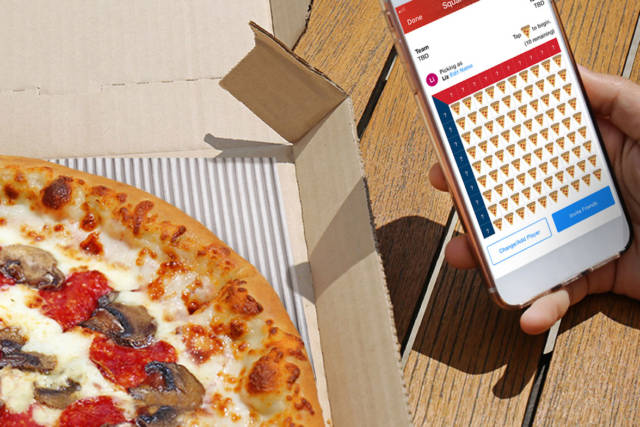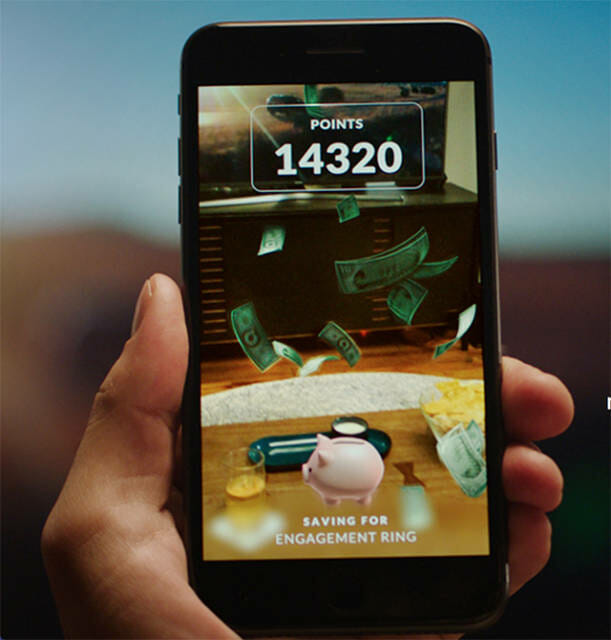Highlights
Cinemark has made two executive appointments, tapping Wanda Gierhart for chief marketing officer and Sean Gamble for chief operating officer.
“Wanda’s extensive retail marketing background will provide great insights and augment the strength of our global marketing organization,” stated Mark Zoradi, Chief Executive Officer. “[Sean] has been deeply involved in the Company’s cross-departmental business decisions and has added tremendous value with his extensive financial and operational education and experience.”
Prior to joining Cinemark, Gierhart served as CMO for Neiman Marcus Group, Design Within Reach and Limited Brands. Gamble has been with Cinemark since 2014, when he signed on as executive vice president and chief financial officer.
Just one week after joining Facebook’s board of directors, Ken Chenault has taken the same position on Airbnb’s board, marking its first-ever independent member.
“Airbnb is built on trust. As the CEO of American Express, Ken has built one of the most successful trust-based companies in the world,” wrote Airbnb CEO Brian Chesky in an open letter.
Chenault will retire from his current position of CEO of American Express, a title he has held for 17 years, in February.
BuzzFeed will largely disband its non-news division, known as the BuzzFeed Entertainment Group, according to an internal memo obtained by The Hollywood Reporter. Ze Frank, currently the division’s president, will shift to the newly created position of chief research and development officer.
“These things keep changing and evolving,” BuzzFeed CEO Jonah Peretti told The Hollywood Reporter. “The idea is that Ze can have a team of people come in and collaborate and figure out how to build new formats and evolve for the future: it’s a really appealing resource across the company.”
Frank has been with BuzzFeed since February of 2017, when he joined as president of BuzzFeed Motion Pictures.
After eight years as CEO of Activision, Eric Hirschberg has announced his retirement, slated for the end of March.
“During Eric’s tenure we’ve had historic performance and great successes. He is an inspiring leader, and we will all miss his creativity and tenacity very much,” said Bobby Kotick, CEO of Activision Blizzard. “He is leaving the team, the franchises and the business in a great place, and he goes with my full support and appreciation.”
Activision Blizzard has not yet found a replacement, declaring that it is now actively searching for one.
Facebook chief marketing officer Gary Briggs has announced his retirement from his position, citing plans to get involved in politics on behalf of the Democratic Party for the 2018 midterm elections.
“I am so grateful for my 4 1/2 years as CMO at Facebook and will work now on hiring my successor. It’s an amazing job at an amazing time with the best marketing team,” Briggs wrote in a Facebook status update. “While I’m getting ready for my next chapter, I’m not done yet. I’ll be here at Facebook fully committed until we hire someone great and they ramp up.”
Briggs has been with the social network since 2013, leaving a vice presidency at Google for the position.
Dr. Seongjoon Koo has joined J.D. Power as its first-ever chief data officer, where he will lead the analytics provider’s efforts in advancing its data science and machine learning capabilities.
“As we enter a phase of expanded innovation, Dr. Koo will lead the creation of the team, infrastructure and operating model to make J.D. Power an AI-centered company,” said Bernardo Rodriquez, J.D. Power’s chief digital officer.
Prior to joining J.D. Power, Koo held the title of director of data science at Encore Capital Group, leading the financier’s machine-learning development teams.
The Ad Council has promoted Kenneth Kroll to the position of chief financial officer, succeeding Jon Fish who departed from the organization in 2016.
“Over the last ten years at the Ad Council, Ken has shown an exceptional ability to leverage his business and financial acumen to empower our team and our campaigns to drive meaningful impact,” said Lisa Sherman, president & CEO of the Ad Council.
Kroll first joined the Ad Council in 2008, most recently reaching the position of senior vice president of finance.
Anthony Noto, Twitter’s chief operating officer, has departed the business to join online lender Social Finance as CEO.
“Anthony has been an incredible advocate for Twitter and a trusted partner to me and our leadership team,” said Jack Dorsey, Twitter’s CEO. “On behalf of the entire team, I want to thank Anthony for his passion and his impact, and congratulate him on his new role.”
Noto had been with Twitter since 2014.
Live Nation has hired Patricia Flores as vice president of marketing for its newly created Live Nation Latin division, seeking to expand the live entertainment company’s Hispanic audience.
“Patty has a unique way of tapping into the hearts and minds of Latin music fans to help connect them with artists from across the globe,” said Hans Schafer, senior vice president of Live Nation Latin. “We’ve worked together in the past, and I’ve seen her creative marketing strategies elevate countless projects.”
Flores most recently was head of Latin marketing at AEG Concerts and Goldenvoice, overseeing campaigns for artists such as Mana, Juanes, Enrique Iglesias and others.
Hyatt Hotels has announced major corporate restructuring, eliminating the role of chief marketing officer in favor of a chief commercial officer. Hyatt’s current CMO, Maryam Banikarim, will leave the company at the end of April.
“This starts at the top with our leadership, and we are making changes to streamline the Executive Committee and to better enable us to maximize our core hotel business and continue our expansion into new lines of business,” said Mark Hoplamazian, president and CEO of Hyatt Hotels. “The changes we’re making will better position us to grow with focus to serve our high-end customers and guests in the places and with the experiences that matter most to them.”
Banikarim has been with the hotel chain for three years, previously serving as senior vice president and CMO of Gannet Corp, owner of USA Today.
Spirits distiller Pernod Ricard USA has appointed Jonas Tåhlin to fill an additional position, CMO of spirits for the US region, while retaining his title of CEO of Absolute Elyx USA.
“We are thrilled to welcome Jonas into this important position. Jonas has been a key member of the Pernod Ricard USA team over the past 10 years and has extensive knowledge of the Pernod Ricard Group and Brand Companies,” said Paul Duffy, CEO of Pernod Ricard USA. “His experience, coupled with his expertise and familiarity with the US market, makes him the perfect candidate to lead spirits marketing at Pernod Ricard USA.”
Tåhlin first joined Pernod Ricard in 2008 and has been CEO of Absolute Elyx since 2014.
Andy Lark has joined Australian TV network Foxtel as its CMO, heading the brand’s marketing efforts as the company seeks to merge its operations with Fox Sports.
“Andy is an outstanding leader, globally recognized for his marketing and leadership in both large companies and high growth start-ups,” said Peter Tonagh, Foxtel’s CEO, to The Australian.
Lark most recently held the position of CMO at Xero, an accounting software firm, and has previously held marketing and communications jobs at Sun Microsystems, LogLogic and Nortel.
The Rest Of The C-Suite
(Editor’s Note: Our weekly careers post is updated daily. This installment will be updated until Friday, January 26. Have a new hire tip? Let us know at editorial@alistdaily.)
MGT Capital Investments has announced that it is ending its business relationship with John McAfee, who had served as the company’s chief cybersecurity visionary since August of 2017.
“I am looking forward to toiling in obscurity as the world’s foremost authority of all things cyber and crypto!” McAfee stated. “In all candor, the past two years have been action-packed and productive, and I want to thank all shareholders for their support. I leave MGT in much stronger condition than when I arrived and remain a major stakeholder.”
McAfee guided the company’s formation of its cybersecurity business, which MGT Capital is considering the possibility of selling or spinning off the division. According to its press release, MGT will instead focus on crpytocurrency mining.
Ralph Lauren Corporation is expanding its digital team, appointing three new senior ecommerce leaders.
Laura Porco, formerly leading ecommerce for the company’s Club Monaco brand, has been appointed senior vice president of ecommerce for Ralph Lauren North America. Filling her former position is Galen Hardy, formerly head of apparel merchandising at Zappos.
Additionally, Valeria Juarez has been promoted to the position of senior vice president of international ecommerce.
“We are moving urgently to expand our digital presence all over the world and bringing in the right senior talent to help us deliver,” said Patrice Louvet, Ralph Lauren’s CEO. “We have to meet consumers where they are, which is increasingly online, and digital expansion is one critical way we will drive new growth for our iconic business and brand.”
Florian Hunziker, Sony Interactive Entertainment’s head of developer relations, is departing the company, VentureBeat reports. He had held the position since January of 2017.
NewTV, a mobile-centric media startup, has appointed Meg Whitman CEO.
“Meg is one of the most accomplished and sought-after executives of our time. She has built and scaled some of the most important global companies today,” said Jeffrey Katzenberg, NewTV’s founder and chairman. “Her leadership, operational expertise and deep understanding of technology and consumer behavior will be invaluable in creating the future of mobile entertainment.”
Whitman most recently worked as CEO of Hewlett Packard Enterprise, on whose board she continues to serve. Prior to its division into two separate companies, she also was president and CEO of Hewlett-Packard Company, and before that was president and CEO of eBay until 2008.
Marketing agency MarketCast has expanded its executive ranks, bringing on Jenny Matkovich as marketing director and Lee Doyle as executive vice president of global client strategy, Deadline reports.
Prior to MarketCast, Doyle worked at ad conglomerate GroupM as president of client development for Mindshare. Matkovich previously worked at T2 Tech Group as director of marketing.
Disney-owned BAMTech Media has hired Kevin Swint as senior vice president and general manager for its upcoming streaming video on demand platform, Variety reports.
Before joining Disney, Swint worked at vice president of content and services for Samsung, where he helped build the company’s Milk Music streaming service.
Jiang Wei has joined Legendary Entertainment, the studio behind Pacific Rim and Kong: Skull Island, as the head of its China unit.
Previously, Jiang led the Beijing-based production company Gravity Pictures, and before that served at Sony, where he assisted in development and distribution of Crouching Tiger, Hidden Dragon.
Apple’s director of worldwide investigations, Lee Freedman, has left the tech giant for a new role at another tech giant, Facebook. Since 2011, Freedman led the company’s efforts to quell leaks.
At Facebook, Freedman will serve as director and associate general counsel for compliance for security and investigations, a largely similar position to his job at Apple. Jessica Kirschbraun will take over his responsibilities.
Arthur Martinez, Abercrombie & Fitch’s executive chairman, will step down from his role in early February. His responsibilities will be taken over by Terry Burman, currently Abercrombie’s lead director.
“My decision to step down as executive chairman and not stand for re-election to the board is part of a planned transition of the chairman role,” Martinez said in a statement. “With the company on a solid trajectory, this is the right time to hand over board leadership to Terry, who has outstanding credentials as a retail industry leader and is the right person to assume the role.”
Martinez first joined the clothing company’s board in 2014, and before joining Abercrombie helped lead a sales turnaround for Sears in the late 1990s.
Netflix has added Eutelsat CEO Rodolphe Belmer to its board of directors.
“We look forward to benefiting from Rodolphe’s wisdom, experience and global perspective as we continue to grow Netflix all over the world,” said Reed Hastings, Netflix co-founder and CEO.
Belmer has led the European satellite operator since 2016, and prior to that was CEO at Canal + Group from 2012 to 2015.
Former game hardware executive Phil Harrison has joined Google as vice president and general manager, he reported in a Tweet on Monday.
Prior to joining Google, Harrison spent over 25 years at Sony and Microsoft, holding executive positions for each company’s gaming divisions.
Andrew Edelson has joined Fox Content Labs, the advertising division of Fox Network Groups, as its APAC head.
“It’s an honor to join such a household name in entertainment. I look forward to focusing on a few key initiatives – transforming the FOX brand into something more culturally relevant in each local market, leveraging our creative production resources to deliver bespoke branded work for all screens and capturing data across all our channels to help clients know consumers better,” said Edelson. “If we can do all this, it won’t feel like advertising, it will feel like the new FOX.”
Edelson joins Fox after spending 10 years in China expanding GroupM and MEC China’s entertainment unit, working on films such as Iron Man 3, Now You See Me 2 and What Women Want.
The Priceline Group has hired David Goulden as executive vice president and chief financial officer, succeeding Daniel J. Finnegan, who retired last year.
“[Goulden] brings tremendous financial acumen and global operating experience to the Group, and we believe he will be a great asset as our business continues to expand and invest in new technologies to help people experience the world,” said Glenn Fogel, Priceline’s CEO.
Prior to joining Priceline, Goulden worked at Dell Technologies as president of is infrastructure solutions group, and before that was CFO for EMC Corporation, which Dell acquired in 2016.
National Milk Records (NMR), a dairy and livestock information services provider, has expanded its marketing team, promoting Nicci Chamberlin to lead the new group.
“The appointment of a new marketing team will enhance our internal capabilities and is an exciting step in NMR’s growth strategy,” said Andy Warne, NMR’s managing director.
Prior to her promotion, Chamberlin held the title of regional field business manager.
Job Vacancies
Make sure to check back for updates on our Jobs Page.

 NFL And Traditional Games Publisher Go For Win-Win Partnership
NFL And Traditional Games Publisher Go For Win-Win Partnership
